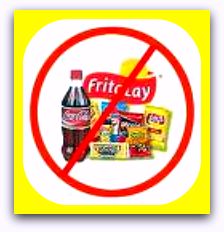Binge Eating Disorder
Binge eating disorder also called "compulsive eating"
Is the overuse and over consumption of food.
It can be intensive on short periods of time and even...
most of the time!
This behavior is compulsive and difficult to control.
It is an addiction to food that you don’t want to admit.

Can There be a Healthy Addiction?
Yes...It is possible to develop a healthy addiction or compulsion, such as:
You can Change Binge Eating Disorders: Follow These 10 Rules
#1. You must make an honest assessment and admit to yourself that you do have binge eating disorder, compulsive behaviours towards food, healthy addictions as well as unhealthy addictions and habits.
#2. You must be willing, on your own, to want to change the unhealthy binge, compulsive, habitual and addictive behaviours. Unless you want to change the behaviours for your own sake rather than to please someone else, you will lack the strength of motivation and conviction to follow through with the decision and behaviours needed to change.
#3. You must be willing to admit to yourself that to change any habit or old behaviour is a difficult task and you must be willing to set realistic goals for yourself.
#4. Once you identify the target behaviours to be changed, monitor yourself for the next month and keep a daily log of your behaviours. Each night put the log in your journal and answer the following questions concerning your binge eating behaviour:
A. How often did I binge on food today?
B. What did I do? What were the dimensions and size of my behaviour?
C. Were there other people around or was I hiding?
D. What was my emotional tone while I engaged in the behaviour?
E. Was there any significant event or cue preceding my binging?
F. Where do I commonly have such a behaviour?
G. How do I feel after binging?
#5. After you spend a month of daily logging in these target behaviours, look for a pattern present in your habits and determine: WHERE? Usually in home, kitchen, bar, work site, restaurant... TIME OF DAY? Usually in morning, evening, at lunch, after work... WHEN? On Fridays only, on pay days only, every day, weekends only... HOW LONG IT LASTS? Usually 3 minutes or less, 30 minutes... STATE OF EMOTION PRECEDING THE BINGING? Usually anxious, happy, depressed,stressed... STATE OF EMOTION AFTER THE BINGING? Usually guilt, remorse, fear, depression, anger, disappointment... IN WHAT SOCIAL ENVIRONMENT? Hiding and alone, with a specific person every time, in a social setting...
#6. Review the log and look for patterns. Do a chain analysis on selected events to see if the patterns you identified in Step 5 can be further clarified.
#7. Now that your log, pattern analysis and behaviour chains are completed, determine which of these next corrective actions need to be taken. A. What needs to be restructured at home, at work and in the community to make it more difficult for yourself to engage in these behaviours? B. What changes need to be made in your daily, weekly and monthly schedule in order to reduce the opportunities for the binge eating disorder to occur? C. What self-monitoring or social support systems do you need to establish to help control or stop thinking about engaging in spontaneous eating? D. What thought-stopping techniques do you need to use to avoid thinking about binging? E. What do you need to do to remind yourself to change habitual ways of acting so that you are not continually hard on yourself if you "fall off the waggon?'' F. What action plan can you set up to ensure you'll "jump back on the waggon" after failure?
#8. After answering the Step 7 issues, you are now ready to develop a plan of action. Set a realistic time frame. Be sure you have a support system to help you. Be sure you reevaluate the steps included in your plan.
#9. Take action on your new set plan and monitor the results.
#10. If still unsuccessful, go back to Step 1 and begin again.
From this "Binge Eating Disorder"page" back to "Vegetable Nutrition Facts" page.
